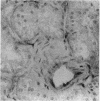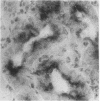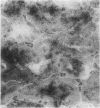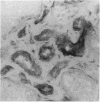Abstract
AIM: To determine the role of intercellular adhesion molecule-1 (ICAM-1) in immune mediated damage in glomerulonephritis, and whether its expression correlates with disease activity. METHODS: Fifty three renal biopsy specimens from a range of non-immune renal disease and low grade and high grade glomerulonephritides were stained with ICAM-1. Positivity was assessed in the tubules. Tubular damage and accompanying interstitial inflammation were also noted. The ICAM-1 positivity in damaged and undamaged tubules was correlated with the three groups of renal disease. RESULTS: ICAM-1 positivity in undamaged tubules was observed in glomerulonephritis, and this showed a strong correlation with disease activity. In contrast, ICAM-1 positivity on damaged tubules correlated with evidence of chronic tubular damage, and was seen in a large proportion of cases, regardless of the underlying disease. There was no correlation between ICAM-1 positivity and a local lymphocytic infiltrate. CONCLUSION: ICAM-1 probably has an important role in the pathogenesis of glomerulonephritis. Its expression may be secondary to cytokines released by cells participating in the glomerular damage. As these cytokines also influence tubule function, tubular ICAM-1 expression may be a marker of the extent of tubular disturbance in glomerulonephritis.
Full text
PDF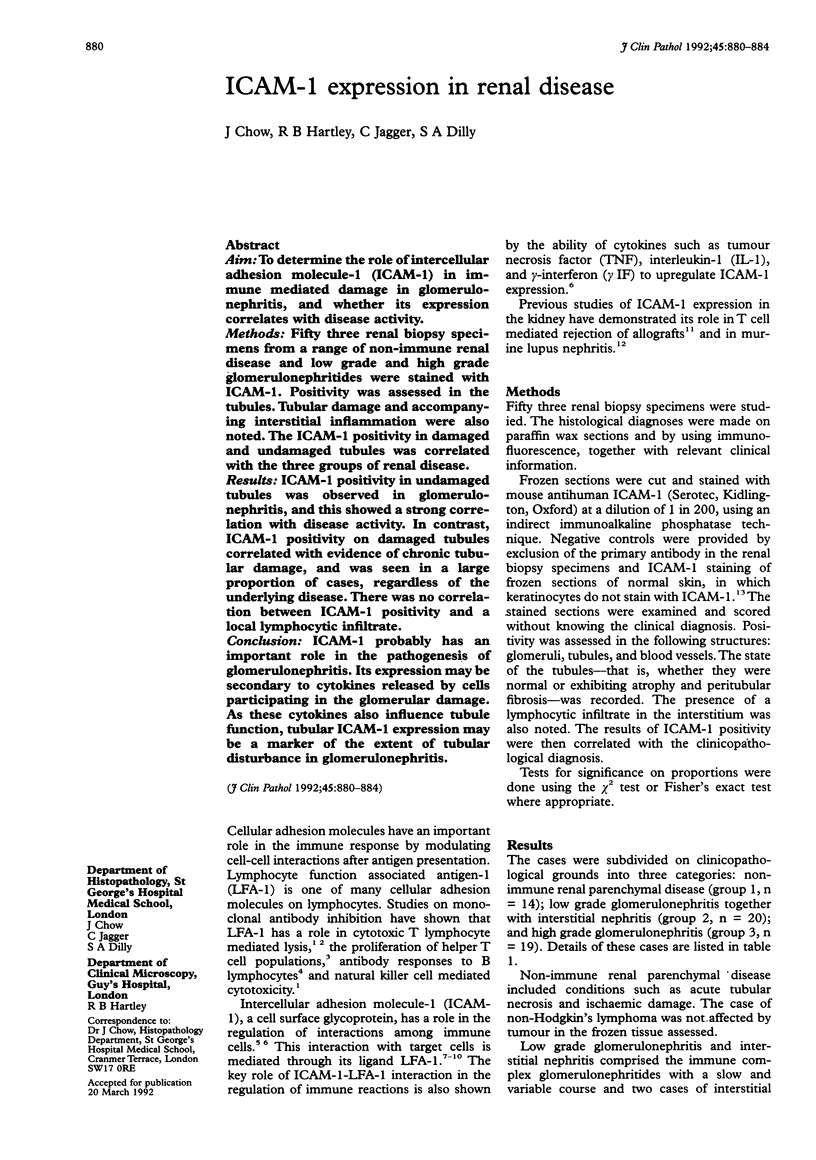
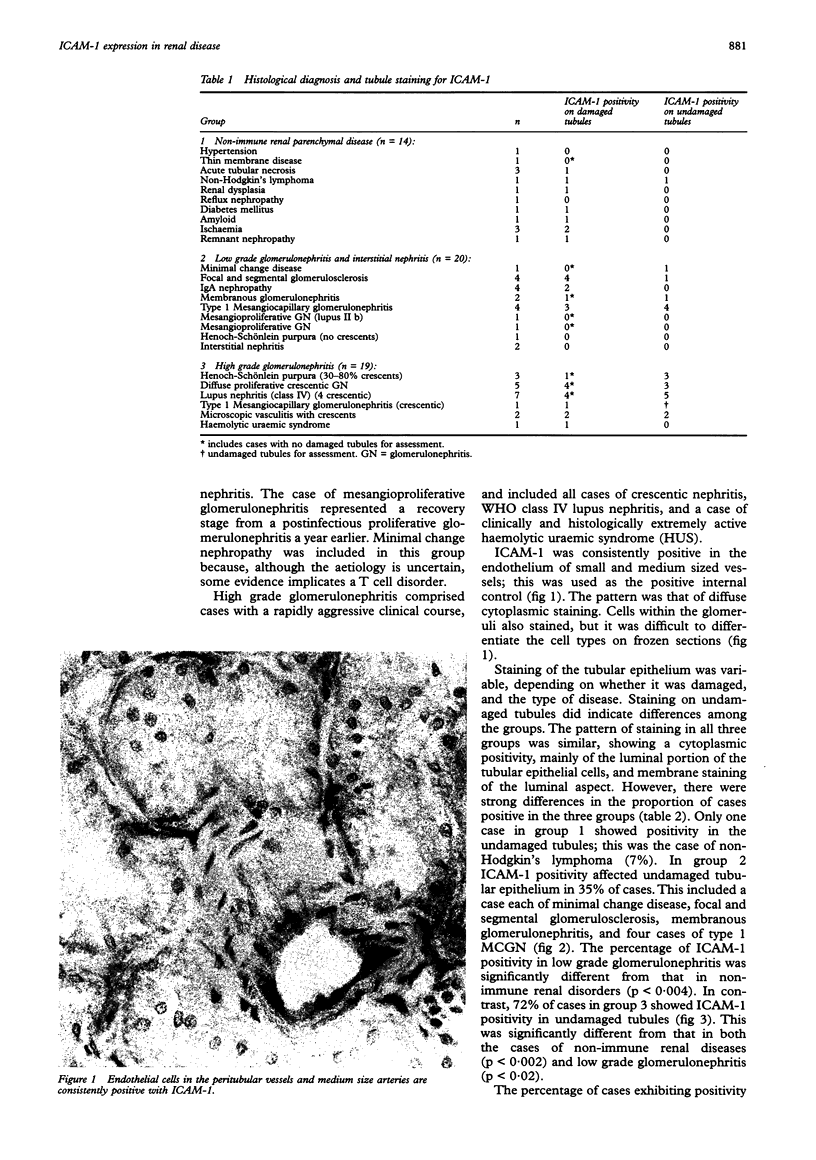
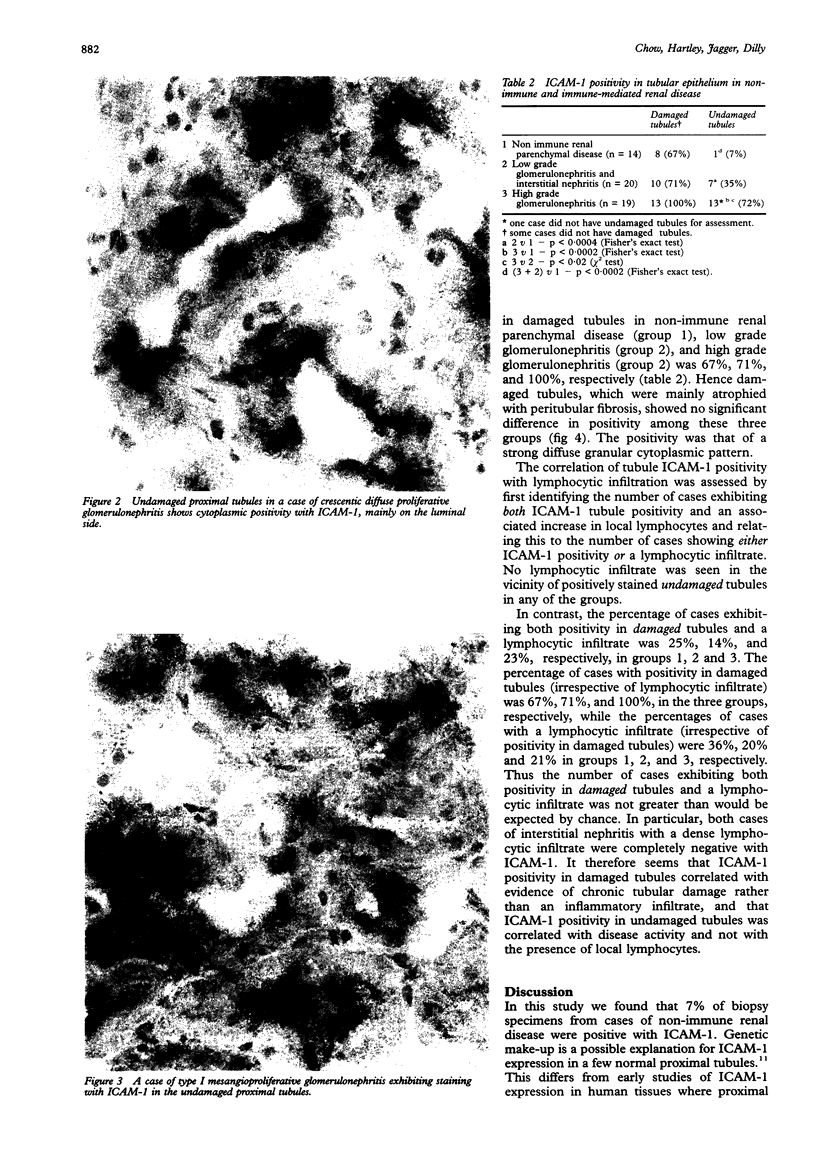
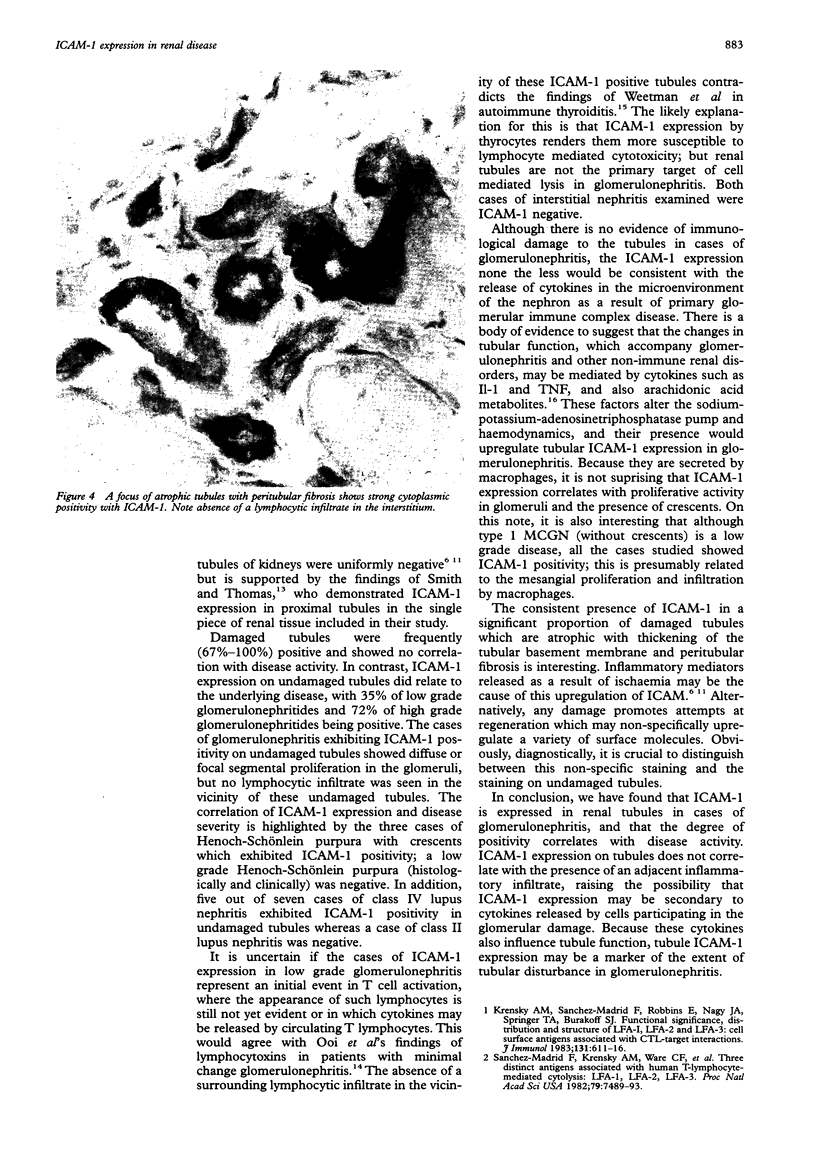
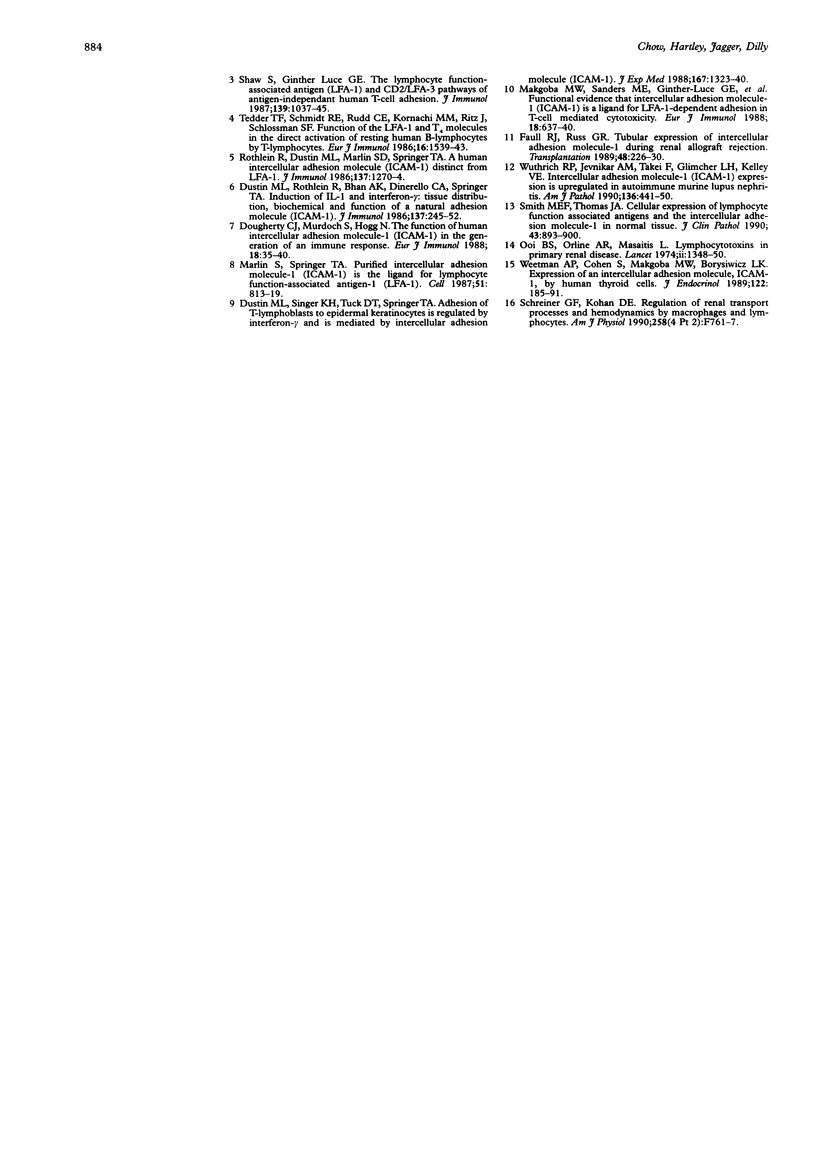
Images in this article
Selected References
These references are in PubMed. This may not be the complete list of references from this article.
- Dougherty G. J., Murdoch S., Hogg N. The function of human intercellular adhesion molecule-1 (ICAM-1) in the generation of an immune response. Eur J Immunol. 1988 Jan;18(1):35–39. doi: 10.1002/eji.1830180107. [DOI] [PubMed] [Google Scholar]
- Dustin M. L., Rothlein R., Bhan A. K., Dinarello C. A., Springer T. A. Induction by IL 1 and interferon-gamma: tissue distribution, biochemistry, and function of a natural adherence molecule (ICAM-1). J Immunol. 1986 Jul 1;137(1):245–254. [PubMed] [Google Scholar]
- Dustin M. L., Singer K. H., Tuck D. T., Springer T. A. Adhesion of T lymphoblasts to epidermal keratinocytes is regulated by interferon gamma and is mediated by intercellular adhesion molecule 1 (ICAM-1). J Exp Med. 1988 Apr 1;167(4):1323–1340. doi: 10.1084/jem.167.4.1323. [DOI] [PMC free article] [PubMed] [Google Scholar]
- Faull R. J., Russ G. R. Tubular expression of intercellular adhesion molecule-1 during renal allograft rejection. Transplantation. 1989 Aug;48(2):226–230. doi: 10.1097/00007890-198908000-00009. [DOI] [PubMed] [Google Scholar]
- Krensky A. M., Sanchez-Madrid F., Robbins E., Nagy J. A., Springer T. A., Burakoff S. J. The functional significance, distribution, and structure of LFA-1, LFA-2, and LFA-3: cell surface antigens associated with CTL-target interactions. J Immunol. 1983 Aug;131(2):611–616. [PubMed] [Google Scholar]
- Makgoba M. W., Sanders M. E., Ginther Luce G. E., Gugel E. A., Dustin M. L., Springer T. A., Shaw S. Functional evidence that intercellular adhesion molecule-1 (ICAM-1) is a ligand for LFA-1-dependent adhesion in T cell-mediated cytotoxicity. Eur J Immunol. 1988 Apr;18(4):637–640. doi: 10.1002/eji.1830180423. [DOI] [PubMed] [Google Scholar]
- Marlin S. D., Springer T. A. Purified intercellular adhesion molecule-1 (ICAM-1) is a ligand for lymphocyte function-associated antigen 1 (LFA-1). Cell. 1987 Dec 4;51(5):813–819. doi: 10.1016/0092-8674(87)90104-8. [DOI] [PubMed] [Google Scholar]
- Ooi B. S., Orlina A. R., Masaitis L. Lymphocytotoxins in primary renal disease. Lancet. 1974 Dec 7;2(7893):1348–1350. doi: 10.1016/s0140-6736(74)92215-6. [DOI] [PubMed] [Google Scholar]
- Rothlein R., Dustin M. L., Marlin S. D., Springer T. A. A human intercellular adhesion molecule (ICAM-1) distinct from LFA-1. J Immunol. 1986 Aug 15;137(4):1270–1274. [PubMed] [Google Scholar]
- Sanchez-Madrid F., Krensky A. M., Ware C. F., Robbins E., Strominger J. L., Burakoff S. J., Springer T. A. Three distinct antigens associated with human T-lymphocyte-mediated cytolysis: LFA-1, LFA-2, and LFA-3. Proc Natl Acad Sci U S A. 1982 Dec;79(23):7489–7493. doi: 10.1073/pnas.79.23.7489. [DOI] [PMC free article] [PubMed] [Google Scholar]
- Schreiner G. F., Kohan D. E. Regulation of renal transport processes and hemodynamics by macrophages and lymphocytes. Am J Physiol. 1990 Apr;258(4 Pt 2):F761–F767. doi: 10.1152/ajprenal.1990.258.4.F761. [DOI] [PubMed] [Google Scholar]
- Shaw S., Luce G. E. The lymphocyte function-associated antigen (LFA)-1 and CD2/LFA-3 pathways of antigen-independent human T cell adhesion. J Immunol. 1987 Aug 15;139(4):1037–1045. [PubMed] [Google Scholar]
- Smith M. E., Thomas J. A. Cellular expression of lymphocyte function associated antigens and the intercellular adhesion molecule-1 in normal tissue. J Clin Pathol. 1990 Nov;43(11):893–900. doi: 10.1136/jcp.43.11.893. [DOI] [PMC free article] [PubMed] [Google Scholar]
- Tedder T. F., Schmidt R. E., Rudd C. E., Kornacki M. M., Ritz J., Schlossman S. F. Function of the LFA-1 and T4 molecules in the direct activation of resting human B lymphocytes by T lymphocytes. Eur J Immunol. 1986 Dec;16(12):1539–1543. doi: 10.1002/eji.1830161212. [DOI] [PubMed] [Google Scholar]
- Weetman A. P., Cohen S., Makgoba M. W., Borysiewicz L. K. Expression of an intercellular adhesion molecule, ICAM-1, by human thyroid cells. J Endocrinol. 1989 Jul;122(1):185–191. doi: 10.1677/joe.0.1220185. [DOI] [PubMed] [Google Scholar]
- Wuthrich R. P., Jevnikar A. M., Takei F., Glimcher L. H., Kelley V. E. Intercellular adhesion molecule-1 (ICAM-1) expression is upregulated in autoimmune murine lupus nephritis. Am J Pathol. 1990 Feb;136(2):441–450. [PMC free article] [PubMed] [Google Scholar]



